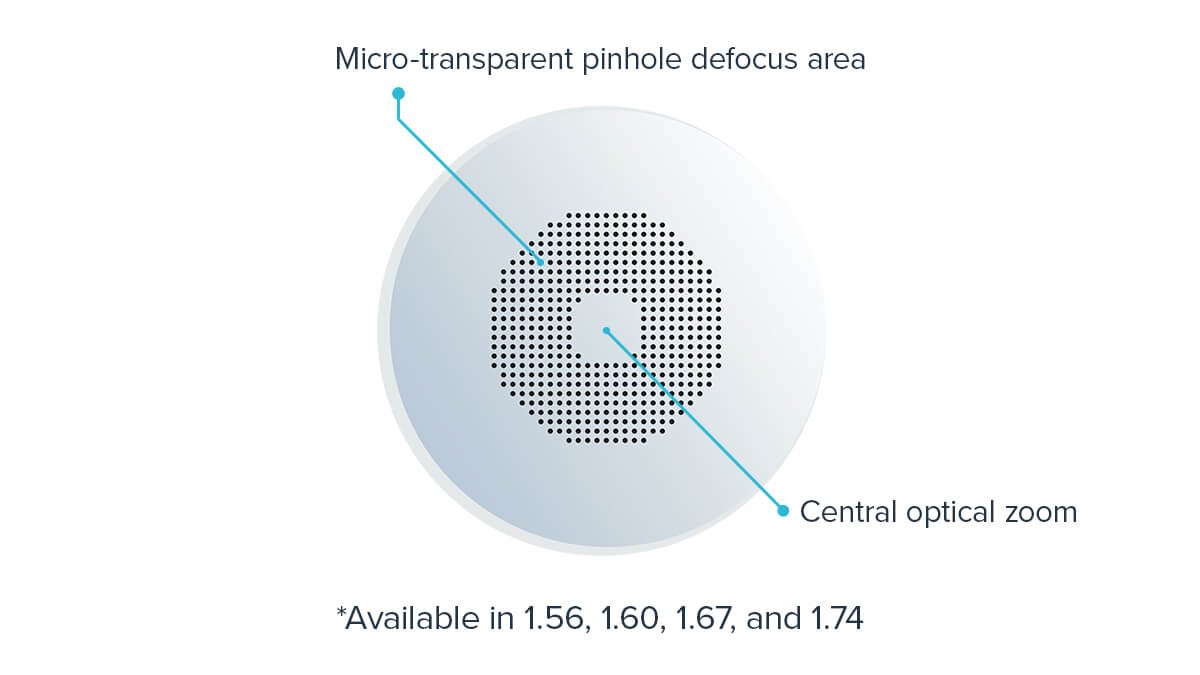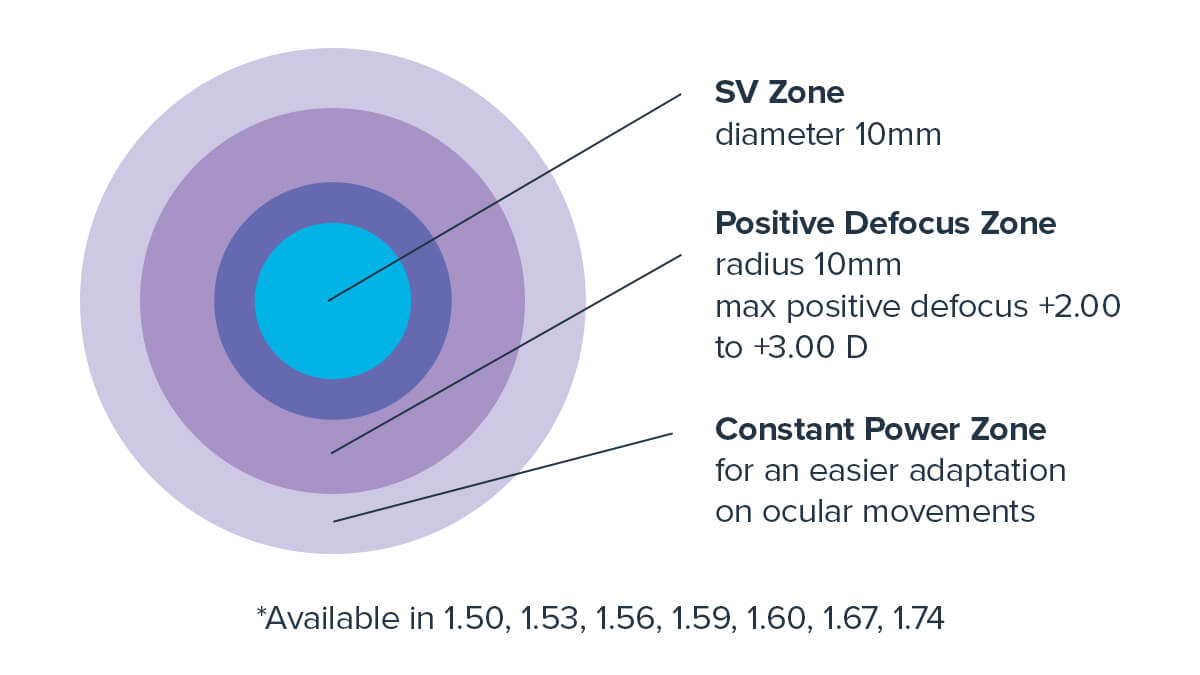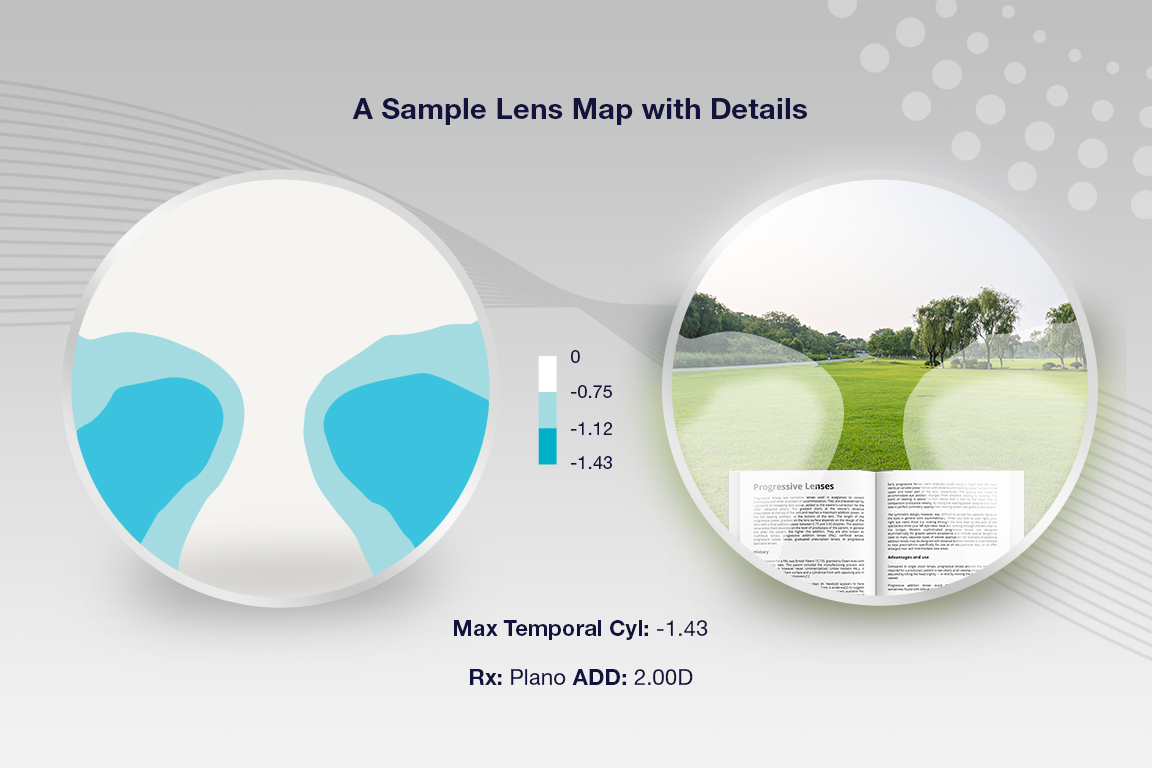With the oft-quoted prediction of half the world’s population being myopic by 2050¹ resounding in the ears of the optical industry, researchers are racing to develop effective strategies to slow or delay myopia progression. Simultaneously, optometrists are charged with educating their young at-risk patients and their parents about the consequences of uncontrolled progressive myopia – myopia is not simply a blurry inconvenience but an ocular health risk with significant visual consequences.²
An Increasing Multitude of Options for Myopia Control
Fortunately, there are several effective strategies for managing progressive myopia already available to clinicians. These include topical atropine eye drops, soft contact lenses, orthokeratology, and spectacle lenses.²
Although global concern about progressive myopia and proactiveness in addressing it has increased amongst optometrists, there is still much room for improved uptake in clinical practice.³ Among the reasons reported for neglecting to prescribe appropriate myopia management strategies are increased cost to the patient, inadequate information,³ and the concern that the risks of the treatment outweigh the potential benefit.²
Spectacles for Myopia Management
Spectacle lenses for vision correction have been around since 1285 AD.⁴ Given this centuries-long history of the use of glasses, it’s understandable that many patients and their parents are the most familiar with this approach to myopia management. Glasses are therefore often the easiest place to begin when commencing a patient on myopia control,⁵, particularly for children who are not prepared to wear contact lenses or tolerate regular atropine instillation.
In addition to being a familiar tool, glasses are also associated with fewer risks and side effects compared to most other myopia management strategies. General spectacle wear in children is associated with bicycle accidents, possibly due to effects on the peripheral visual field. However, there is no association between myopia and bicycle incidents.² Countering this observation are the obvious benefits of improved visual acuity from the optical correction of myopic refractive error.
So far, the data around spectacles for myopia control indicate that the appropriate prescribing of these lenses can be as effective as contact lens strategies for the correction and management of myopia.⁵
MyoEase and MyOnic
The two new spectacle lens developments from Opticare provide yet further options for effective myopia management. Like other spectacle lens designs, the innovative MyoEase and MyOnic lenses are based on the principle of peripheral retinal defocus while providing a sharp central zone to correct distance vision.
The MyoEase lens is designed with a mid-peripheral ring of high-precision, micro-transparent pinholes. This creates a zone of peripheral optical defocus, effectively retarding axial elongation in a myopic eye.

The MyOnic myopia control lens contains a 10mm central single vision zone surrounded by a mid-peripheral positive defocus ring. A constant power zone at the very periphery of the lens enables easier adaptation during ocular movements.

Both groundbreaking lens designs are available in a range of material indices and lens coatings. MyoEase is suitable for myopia up to -16.00D and MyOnic up to -20.00D, enabling effective management of the vast majority of your young myopic patients.
For more information about Opticare’s MyoEase and MyOnic lenses, visit www.opticare.com.au, call 1800 251 852, or email info@opticare.com.au.
References
- Holden BA, Fricke TR, Wilson DA, Jong M, Naidoo KS, Sankaridurg P, Wong TY, Naduvilath TJ, Resnikoff S. Global Prevalence of Myopia and High Myopia and Temporal Trends from 2000 through 2050. Ophthalmology. 2016;123(5):1036-42.
- Bullimore M, Ritchey E, Shah S, Leveziel N, Bourne R, Flitcroft I. The Risks and Benefits of Myopia Control. Ophthalmology. 2021; 128(11):1561-1579.
- Wolffsohn J, Calossi A, Cho P, et al. Global trends in myopia management attitudes and strategies in clinical practice – 2019 Update. Contact Lens & Anterior Eye. 2019; 43(1):9-17.
- NOW. The History of Corrective Lenses. 2022. Available at: https://now.northropgrumman.com/the-history-of-corrective-lenses/#:~:text=Who%20Invented%20Glasses%3F,for%20glasses%20around%201285%20AD. (Accessed August 2023).
- Myopia Profile. The next generation – DIMS, H.A.L.T. and DOT spectacle lenses for myopia control. 2023. Available at: https://www.myopiaprofile.com/articles/the-next-generation-dims-and-halt-technology-spectacle-lenses-for-myopia-control. (Accessed August 2023).





